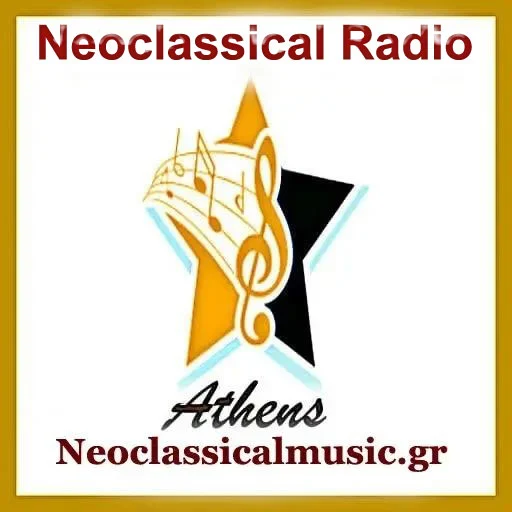Neoclassical Radio: A Statement of Musical Identity
Neoclassical Radio: Classical Music from late Romantic to 20th Century. Listen to masterpieces, opera, and Lieder from the post-Romantic era. Stream now!

Neoclassical Radio is a station that is committed to playing music which engages with the deepest forms of artistic transformation, rather than providing listeners with comforting familiar tunes. The station presents a continuum running from the monumental visions of the late nineteenth century to the uncompromising modernist explorations of the twentieth century. Its programming is guided not by tradition or commercial demand, but by the belief that music of lasting value continues to express truth and revelation.
At its foundation stand figures such as Richard Wagner and Gustav Mahler. Wagner’s concept of the total artwork redefined opera and the theatrical experience, while Mahler broke the traditional boundaries of the symphony and transformed lieder into broad and emotional landscapes. Works such as Das Lied von der Erde (The Song of the Earth) and the late symphonies reflect the restlessness of an era on the edge of collapse. These composers opened the path for new generations who would challenge the concept of harmony itself and take musical expression into unknown territories.
Neoclassical Radio provides continuous live broadcasting. We offer a selection of post-romantic music, lieder and operas from the 20th century.
At this turning point, Richard Strauss stands as both a final expression of the past and a new beginning. His tone poems and operas took late Romanticism to new heights while also exposing its internal conflicts. Salome and Elektra took opera to new psychological levels, presenting audiences with an intensity and dissonance that pointed directly towards modernism. The station recognises Strauss as the transition from Romanticism to the charged atmosphere of the twentieth century.
This legacy continues in the post-Romantic lieder tradition, where the world of song becomes a laboratory for new forms of expression. Alma Mahler’s songs reflect the lyrical passion of the fin de siècle era, while Schoenberg’s early lieder and the epic Gurrelieder demonstrate the progressive breakdown of tonal language. Alexander Zemlinsky and Franz Schreker also contributed to this body of work, each shaping a sound world of sensuality, fragility and psychological insight. For Neoclassical Radio, including these works is a testament to the belief that lieder are central to understanding the transition from Romanticism to modernism, rather than being just a side note.
The operatic dimension of the programme is equally important. Alban Berg’s Wozzeck and Lulu, centred around the haunting Lulu Lied, represent a milestone in the evolution of opera as a form of existential expression. Rather than presenting entertainment, these works offer an unfiltered exploration of despair, desire and the complexities of the human condition. By programming them alongside works by Strauss or Mahler, the station highlights how the operatic stage evolved into a setting for modern tragedy.
This programming rejects simplistic divisions. Tonal and atonal idioms coexist. Schoenberg’s transition from the late Romantic style to the Second Viennese School shows that atonality was not a rejection of expression, but rather an extension of it. Berg and Webern extend this exploration with precision and lyricism, while Schreker and Zemlinsky maintain links with the previous century. Mahler’s orchestral lieder alongside Schoenberg’s twelve-tone experiments and Berg’s operatic works reveal an ongoing historical dialogue.
Neoclassical Radio does not reduce this dialogue to background listening. Instead, it allows each piece of music to be heard in all its original intensity, whether that be the overwhelming orchestration of the Gurrelieder, the focused expressiveness of Alma Mahler’s songs or the bold modernist style of Wozzeck. By refusing to reduce music to easy categories, the station promotes the idea that a collection of pieces which are often presented as divided can actually be unified.
The station’s identity is, therefore, one of continuity within difference. Wagner, Mahler, Strauss, Schoenberg, Berg, Schreker, Zemlinsky and Alma Mahler are not isolated figures, but voices in a shared dialogue about the limits of musical expression. Their works do not just belong to the past; they are still active forces shaping the way music is heard today.
Neoclassical Radio is more than just a broadcaster. It is a medium devoted to keeping alive and passing on a heritage that continues to define the essence of modern culture. It presents music not as an added extra or a way to pass the time, but as an experience that reveals the truth. Listening is not an escape from reality, but an entry into a world where sound becomes thought and thought becomes sound.
In this way, the station affirms its identity as a place where the late Romantic legacy and the modernist breakthrough are in constant dialogue. Here, the human voice in song still resonates with urgency, from Alma Mahler’s fragile lyricism to Berg’s devastating Lulu Lied. Neoclassical Radio is the space in which these works exist, not as historical pieces, but as everlasting expressions of artistic vision.